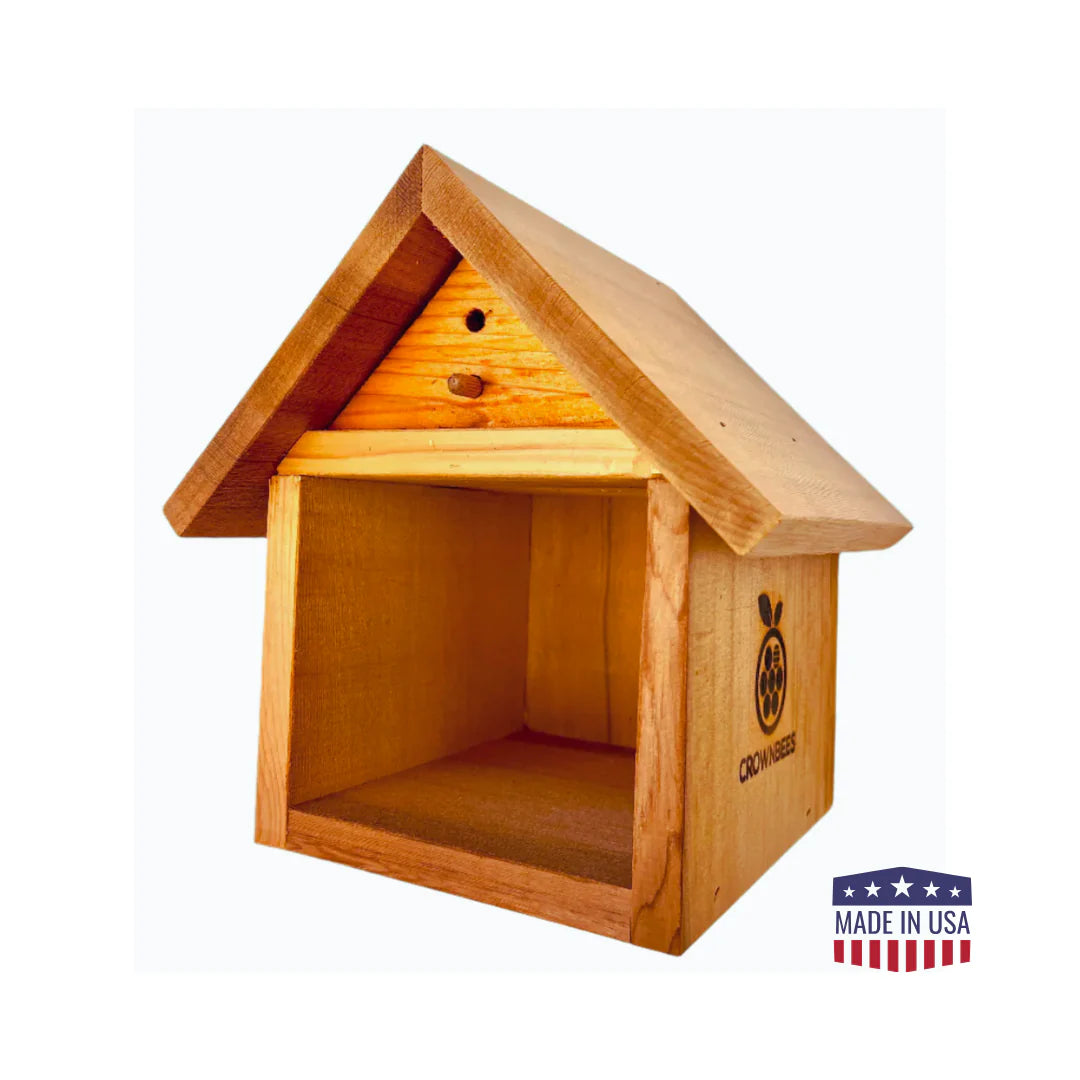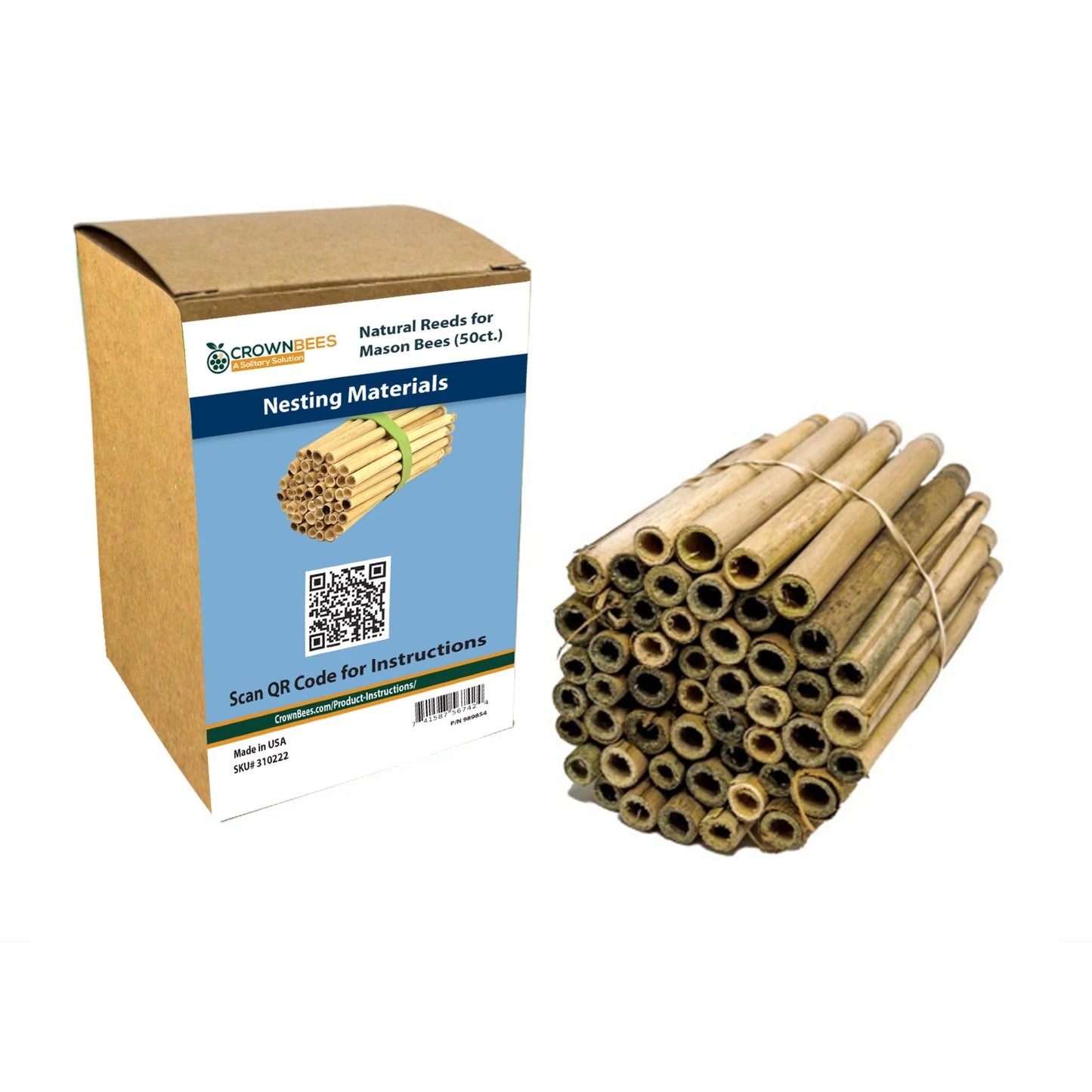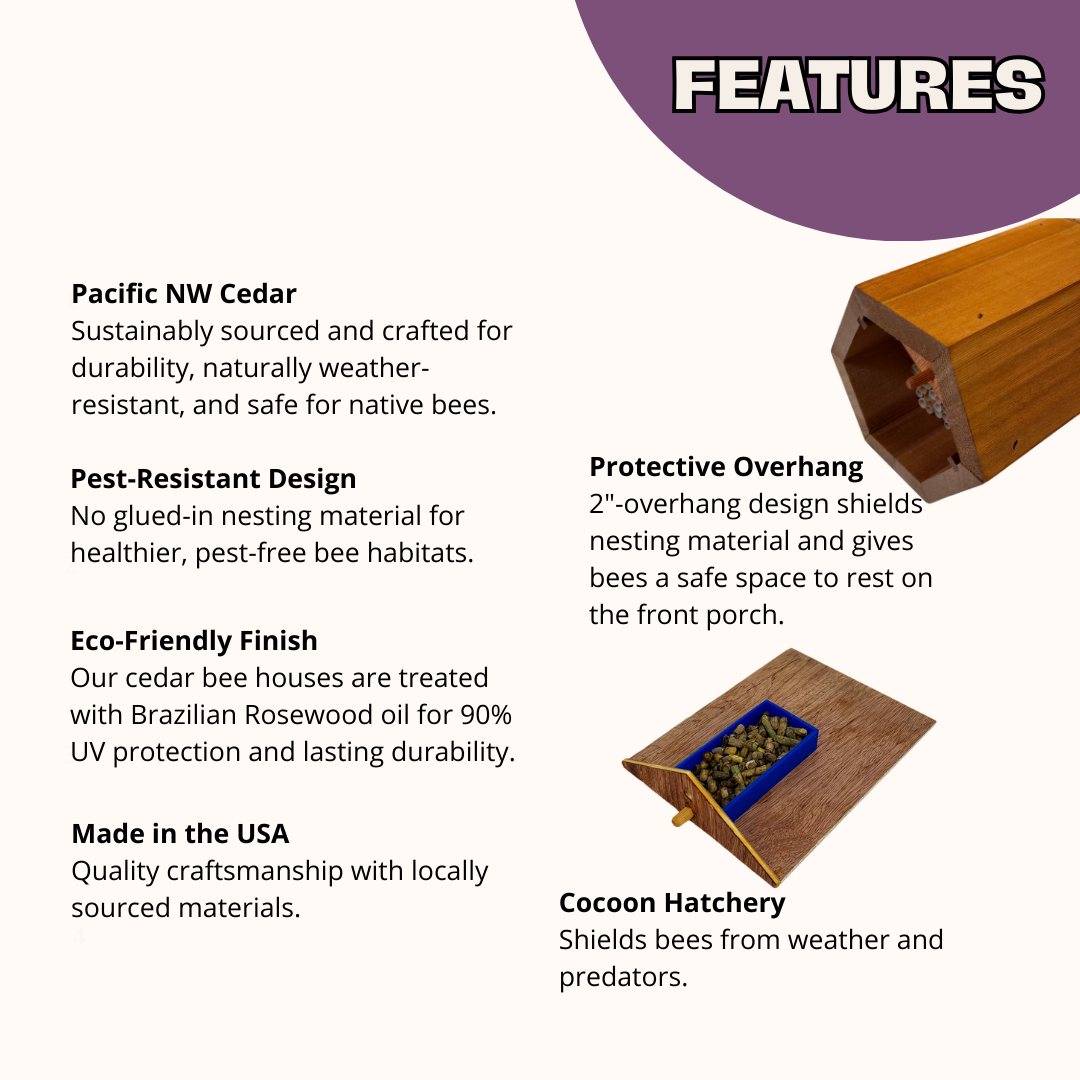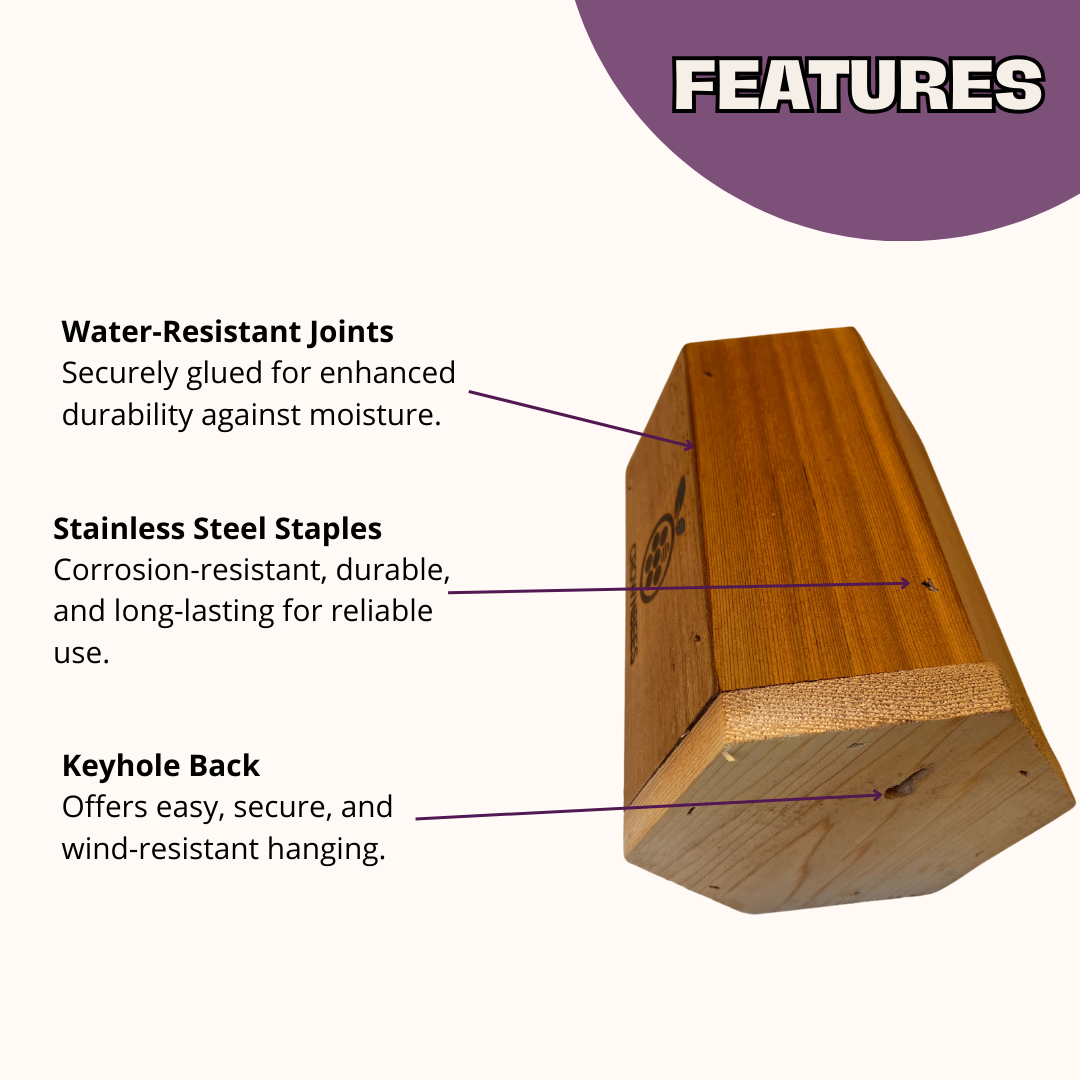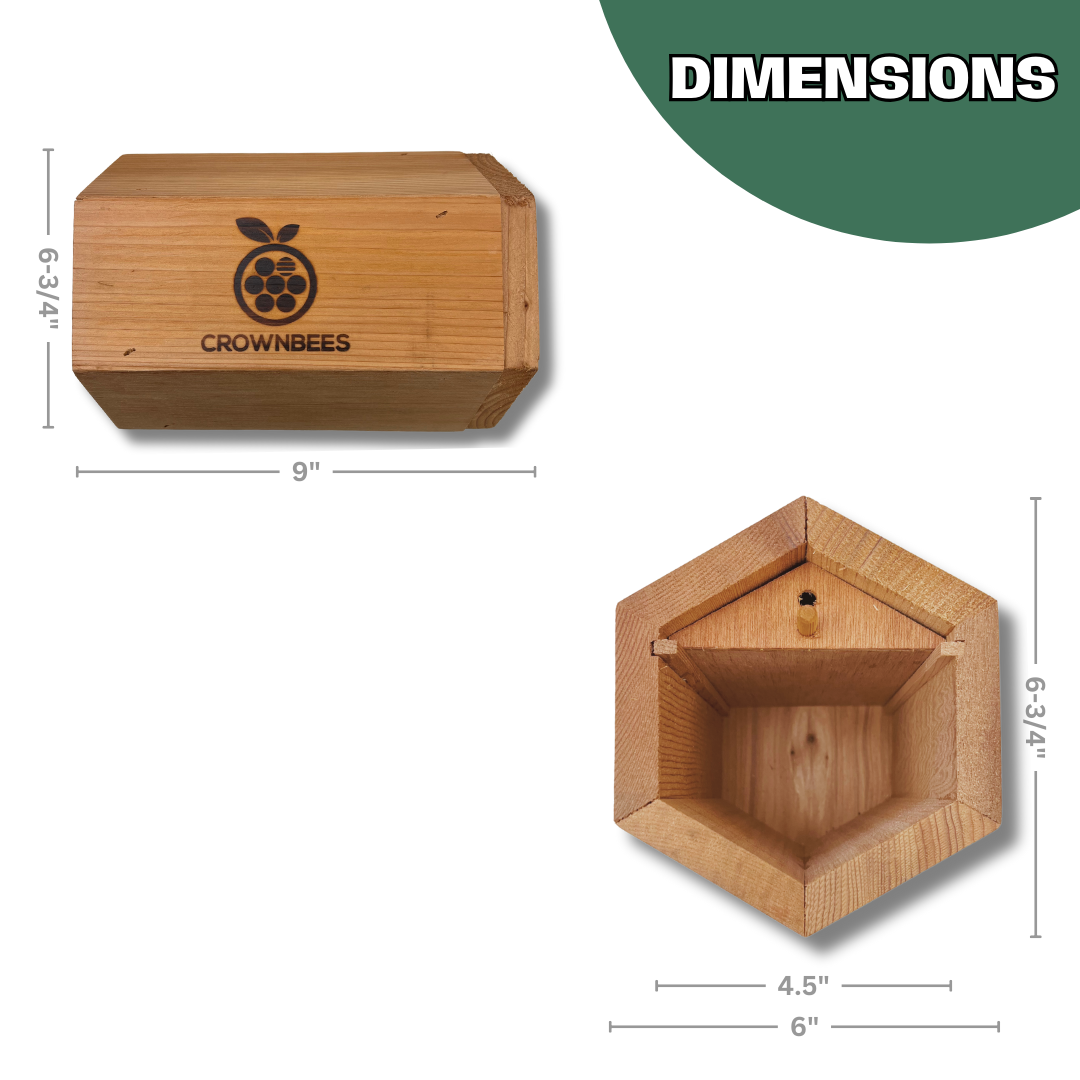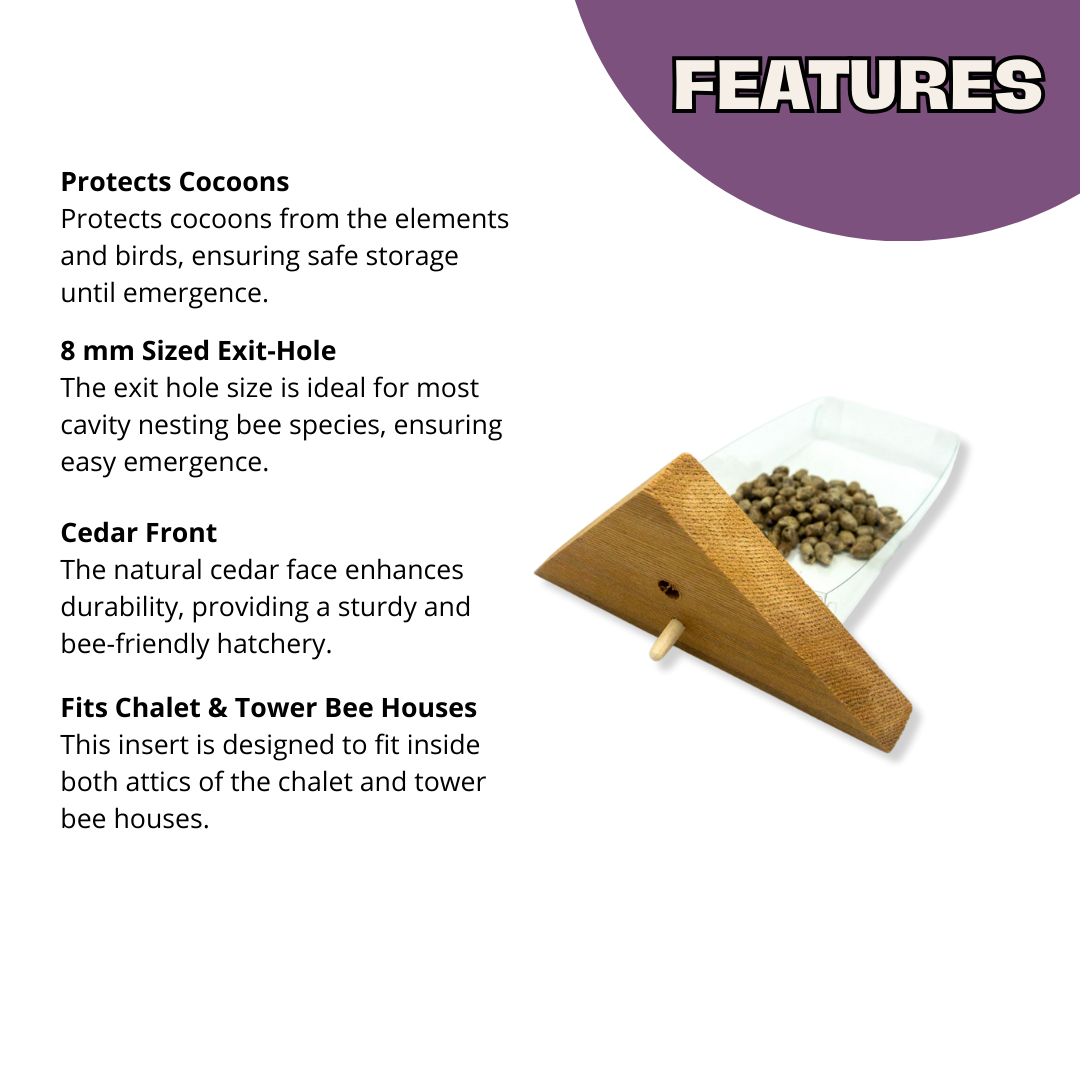Of the world's more than 20,000 species of bees, about 90% are solitary, and ~25% of them nest in hollow stems. In North America, that's about 1,000 species of bees!
Solitary bees don't produce honey, so they aren't territorial, making them safe around kids and pets. Plus, we find their antics fascinating to watch.
Wild bees like Mason or Summer Leaf are the ultimate belly floppers onto flowers! They carry the pollen splash on their hairy bodies. Pollen falls off onto each flower they visit. This makes them phenomenal pollen spreaders!
Each species of cavity nesting bee is in flight in your garden for about 5-6 weeks until they die. Eggs they lay this season are next year's busy bees.
Cavity nesting bees need a house, clean nesting holes (reeds), and a yard with blooms.
Be careful! Just like you wouldn't sleep in a hotel that never changed their sheets, bees should have clean, unused reeds to nest inside. Be sure that the bee hotel you're buying has reeds that can be easily removed and opened.
Our Cabana Kit with Bees, featuring varying reed sizes, is our top-selling option. If you're looking to discover the wild bees in your garden, this is an ideal choice.
Discovery
Solitary bees are found across our country from first spring blooms through the fall. Bees come in all sizes - small, medium, and large - so we recommend providing a variety of reed sizes to make them comfortable. Your buzzing guests will appreciate the options.
Simply set up your bee hotel when dandelions begin to bloom, enjoy through the summer, and then store it in the fall.
Spring
Bees that hibernate in cocoons emerge as adults in spring. Mud-using bees tend to be the first to show up when daytime temperatures reach about 55℉ degrees. You can store these cocoons in your refrigerator and release them when your target blossoms are just beginning to appear.
Order our Mason bees to arrive between February - April. For their protection, we ship them free FedEx 2 Day.
Summer
Summer Leaf bees hibernate as larva over the winter and develop into adult bees with the warm temperatures of spring and early summer. At Crown Bees, we take special care of our Summer Leaf bees ensuring that when they arrive to you, they're ready to fly!
Order our Summer Leaf bees to arrive between May - August. For their protection, we ship them free FedEx 2 Day.
Wild solitary cavity nesting bees use different size holes based on the size of the bee. Small bee species use small, 3-5mm nesting holes while larger bees may use 8-10mm holes.
The holes should be thick enough to prevent pests from getting through, have a back to the hole so they are safe, and be able to be opened by you. Don't worry, we'll teach you what to do in the fall. It's simple!
You want a house that is durable in outdoor weather, easy to hang, and protects your bees.
Our high-quality bee nesting kits include a handcrafted, protective house, to keep nesting holes dry, with a variety of reed sizes, ideal for attracting and watching a diverse range of cavity-nesting bees.
Since 2008, we've successfully developed our complete kits with bees. When you explore our Complete Kits page, here's what to expect:
Pick your favorite house. The bees don't care—click on any kit with a house to explore what’s inside!
Select your pollination season of choice. We have the optimal accessories for both spring and summer, along with the best accessories for each bee species.
Select your bee shipping date. To ensure your bees arrive safely, they are shipped separately via free FedEx 2-day delivery. We recommend having your bees arrive a few weeks before your garden blooms.
Consider bee house additions. For bird lovers, adding a bird guard is an excellent way to protect your bees. Our reed splitters and cocoon finders also make harvesting easy and efficient.
Keep your bees safe from unsafe materials!
All products with bamboo. Unlike natural reeds, bamboo is difficult to open when harvesting cocoons.
Drilled wood blocks. Like bamboo, drilled wood blocks make it challenging to collect cocoons because they can't be opened. Our stackable wood trays provide better access for easy harvesting.
Single-walled tubes. Thin or single-walled tubes make it easy for parasitic wasps to penetrate and lay their eggs, endangering your bees. Our natural lakebed reeds offer better protection, ensuring your bees stay safe.
Tubes with no back. Bees typically avoid nesting in tubes with open ends on both sides. All of our nesting materials come with a closed end to provide a secure environment.
Plastic nesting material. Tends to retain moisture from pollen and nectar, leading to mold growth—ewww, gross!
BeeMail Newsletter
We share expert tips and timely advice throughout the year via our BeeMail newsletter. Click here to sign up.
Our Bee Knowledgeable library is free for everyone. We share multimedia learning material about the fascinating world of solitary cavity-nesting bees, including our mud using Spring Mason and Summer Leaf bees. Videos (some with Chief Pup Sophie!) include "how-to" bee activities, while other photos and videos to help you identify bees and pests. We love to update our library with the latest insights from researchers and field experts.
Help Desk
Looking for help? We're here to help you BEE successful! Quickly find answers our most frequently asked questions in our Bee Knowledgeable library.
If you need a helpful teammate to assist you, you can email us at info@crownbees.com or click on the green leaf in the bottom right side of your screen. We typically respond to questions within a business day.
YouTube
Subscribe to our Channel, where we post seasonal how-to videos with practical advice tailored to each season of bee care.
